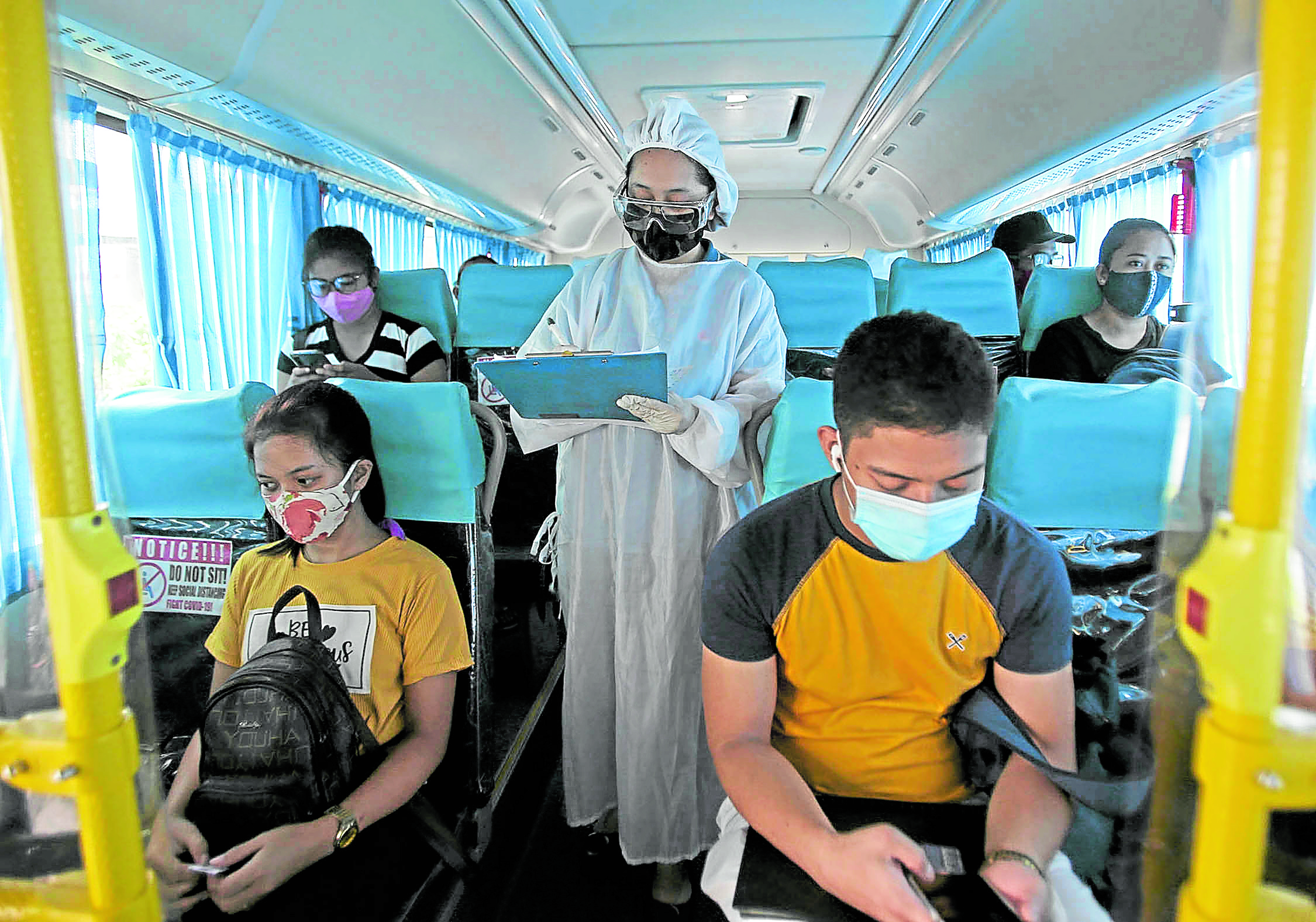New WHO guidelines acknowledge possible airborne virus transmission
The World Health Organization (WHO) on Thursday released new guidelines on the transmission of the novel coronavirus that acknowledged some reports of airborne transmission of the virus that causes COVID-19, but stopped short of confirming its spread through the air.
In its latest transmission guidance, the WHO acknowledged that some outbreak reports related to indoor crowded spaces have suggested the possibility of aerosol transmission, such as during choir practice, in restaurants or in fitness classes.
But the WHO said more research is “urgently needed to investigate such instances and assess their significance for transmission of COVID-19.”
The report follows an open letter from scientists who specialize in the spread of disease in the air—so-called aerobiologists—and who urged the global body to update its guidance on how the respiratory disease spreads to include aerosol transmission.

KEEPING SAFE IN ENCLOSED SPACES Wearing personal protective equipment, the Department of Transportation employees monitor health and safety regulations as observed by commuters at the Edsa-Taft Avenue intersection in Pasay City. —RICHARD A. REYES
Good ventilation
The WHO previously said the virus that causes COVID-19 spreads primarily through small droplets expelled from the nose and mouth of an infected person that quickly sink to the ground.
The new guidelines, however, suggest people should avoid crowds, ensure good ventilation in buildings and encourage masks when physical distancing is not possible.
Article continues after this advertisement“This is a move in the right direction, albeit a small one. It is becoming clear that the pandemic is driven by super-spreading events, and that the best explanation for many of those events is aerosol transmission,” said Jose Jimenez, a chemist at the University of Colorado who signed the letter, which was published on Monday in the journal Clinical Infectious Diseases.
Article continues after this advertisement‘Assumption’
At a press briefing on Thursday, Dr. Anthony Fauci, director of the US National Institute of Allergy and Infectious Diseases, said there is not a lot of solid evidence yet on airborne transmission of SARS-CoV-2, but added: “I think it’s a reasonable assumption that it does occur.”
Fauci said the evidence so far, although incomplete, is “the fundamental basis for why we are now so intent on getting people—particularly people without symptoms—to wear masks. To be able to see if we can mitigate against that,” he said.
Linsey Marr, an aerosol expert at Virginia Tech who contributed to the WHO letter, said she is encouraged that the agency is now acknowledging that airborne transmission may occur.
But she said the WHO is using an “outdated definition of droplets and aerosols” and is too focused on the size of the droplets and the distance they travel.
The WHO defines aerosols as being under 5 microns because only particles that small could float in the air long enough to be inhaled.
42 new PH deaths
However, Jimenez and Marr said a much larger range of particle size has been shown to contribute to infection. Rather than size, they said the differences between droplets and aerosols should be based on how the infection occurs: If a person inhales the virus and becomes infected, it’s an aerosol. If the infection occurs by contact, they are droplets.
Although the WHO has been focused on airborne transmission at long distances, Marr said breathing in aerosols “is of greater concern at close contact and when people are in the same room.”
The Department of Health (DOH) on Friday recorded 42 new deaths, the highest single-day increase in the number of fatalities due to COVID-19 in nearly three months.
The more than three dozen additional deaths bring the COVID-19 death toll in the country to 1,360. Based on the date of reporting, the 42 fatalities are the highest reported in a day since April 12 when there were 50 recorded deaths.
On Thursday, the DOH did not record any new deaths as further validation was needed.
Of the new deaths, 27 occurred in July.
Cebu accounted for the majority of the newly reported deaths, or 36.
Backlogs
Dr. Beverly Ho, the DOH director for health promotion and communication service, said that based on the department’s data, “more than half, or 57 percent [of deaths], are among those age 60 years and above.”
To date, the national caseload has reached 52,914 with the addition of 1,233 new cases—of which 848 are patients who tested positive in the last three days.
Metro Manila accounted for almost half of those cases, or 405, followed by Central Visayas which had 30.
The remainder of the new cases, or 385, are patients who tested positive four days ago or earlier. Metro Manila still had the highest number of these cases at 139, while Central Visayas had 28.
There are now a total of 13,230 patients who have recovered from the severe respiratory disease with the recovery of 286 more patients.
Health Undersecretary Maria Rosario Vergeire said the DOH was working on addressing the testing backlogs, which grew to 12,208 on Wednesday following the recent expansion of the DOH’s testing protocol.
Limiting samples
Apart from the continuing shortage of supplies, Vergeire attributed the backlog to their newly accredited laboratories being “overwhelmed” with samples as they began their operations.
“Right now they are limiting the samples they are receiving so that they could process the backlogs …. We are addressing this. We already identified zones for each of the local governments and hospitals so that when one laboratory is encountering problems like backlogs, it can be assisted by a nearby laboratory,” she said.
Data as of Wednesday showed that there are already a total 910,694 samples processed by the laboratories from 845,434 persons. The government targets to test by end-July at least 1.5 percent of the country’s 108 million population, or 1.6 million. —WITH REPORTS FROM JOVIC YEE